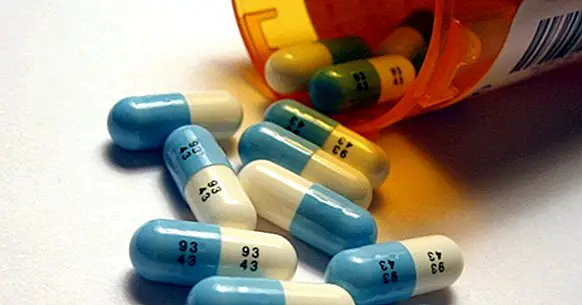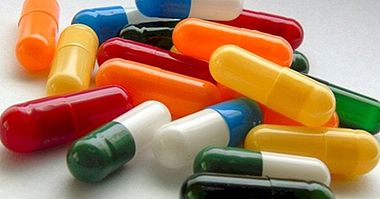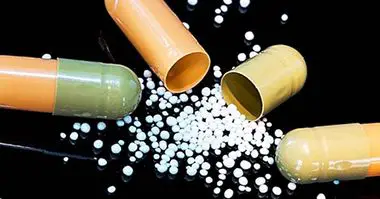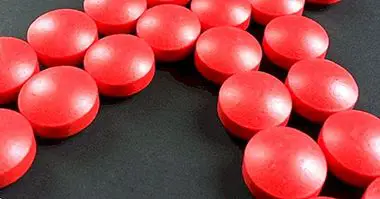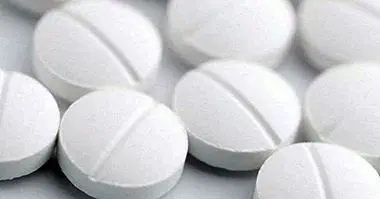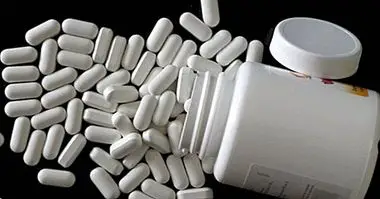Types of antidepressants: characteristics and effects
Mood disorders are, after anxiety disorders, the most prevalent in the population. Within these types of disorder, depression is the best known and most frequent.
It is a disorder that causes great problems in practically all of the vital areas of the human being, affecting both cognitive, emotional and interpersonal. For this reason, its treatment is one of the main goals of psychology and psychiatry, developing different types of treatments both at the psychological level and the cognitive-behavioral treatment as pharmacological in the form of antidepressants.
Regarding the latter, Research throughout history has produced numerous types of antidepressants in order to produce an improvement in depressive symptomatology avoiding side effects as much as possible.
Remembering concepts: what is depression?
The main objective of the different types of antidepressant is to treat depression . Starting from this premise, it is justified to make a small review of what we consider depression. At a clinical level, depression is considered to be a condition in which there is a sad state of mind (which can be seen as irritable in the case of childhood depression) along with the absence of motivation and pleasure experimentation, together with other symptoms such as problems of sleep or weight.
Depressed people tend to have a high level of passivity at the vital level, feeling that they have little control of their lives and often feelings of hopelessness appear. Those who suffer from a depression therefore have a high level of negative affect, together with a low positive affect and, in general, usually present a low level of activation both mentally and physiologically.
Thus, the different types of professionals who are in charge of working to improve the situation of these people have to find methods and mechanisms that allow them to face these difficulties, having been created from pharmacology. different types of antidepressants which are described below.
Main types of antidepressants
The different antidepressants have different mechanisms of action, but the main hypotheses and treatments explain depression from the degradation of monoamines and / or serotonin, with which the antidepressants created are mainly focused on avoiding the degradation of these substances and maintaining them for more time in the synaptic space.
1. Inhibitors of the enzyme MonoAmino Oxidase or IMAOS
It is about the first antidepressants discovered. Its performance is based, as in the other types of antidepressants, on prevent the degradation of monoamines, concentrating on a particular enzyme . This enzyme is the monoamine oxidase, which is emitted from the presynaptic neuron when it captures an excess of monoamines in the cerebral synapse in order to eliminate said excess. Thus, eliminating or blocking this enzyme prevents the degradation of monoamines in the synaptic space, there being a greater availability of these neurotransmitters.
But nevertheless This type of antidepressant presents a high risk to health , since in interaction with substances containing thiamine (a substance easily found in a wide variety of foods) can cause hypertensive crisis, along with other unpleasant side effects. This is why they are mainly used in cases where other antidepressants have not shown any effect.
Types of IMAOS
Within the IMAOS we can find two subtypes. The first subtype is that of the irreversible monoamine oxidase inhibitors , whose main mechanism of action is the complete destruction of this enzyme, so that until it is not generated again its basic functionality is lost. This type of antidepressant is the one with the highest risk, its interaction with other substances rich in thiamin is dangerous and the food to be consumed must be carefully monitored to avoid serious health problems.
A second subgroup is the reversible inhibitors of monoamine oxidase or RIMA, which are preferable to other types of MAOIs because they do not pose such a high risk or tend to interact with diet. Its functioning is based on inhibiting temporarily the function of the enzyme. Moclobemide is one of the substances that are part of this type of antidepressant.
2. Tricyclic and tetracyclic antidepressants
These drugs are, after the MAOIs, the oldest and what for a long period of time were the most used antidepressants. Its mechanism of action is based on preventing the reuptake of serotonin and noradrenaline. However, its action is non-specific, affecting other hormones such as acetylcholine, histamine and dopamine.Due to this it can present serious side effects and even be addictive.
Overdose by these types of substances is potentially life-threatening . For these reasons and before the discovery of new substances are no longer used, more can still be found in clinical practice due to its greater effect in cases of severe depression.
3. Selective Inhibitors of Reuptake of Serotonin or SSRIs
Selective serotonin reuptake inhibitors are currently the type of antidepressant most commonly used in clinical practice, being the treatment of choice in cases of depression, among other things because the side effects they produce are not as intense as those of others drugs used for the same purpose.
These are psychotropic drugs that act by specifically inhibiting the reabsorption of serotonin , not presenting effects in other neurotransmitters. Although they can produce some side effects, these are usually mild (nausea, vomiting or light sedation, among others), they are one of the safest classes, applied in patients who have not had previous contact with antidepressants.
In addition, the relationship between depression and anxiety and the specific mechanism of action of the SSRI makes it also used as a treatment of choice in some anxiety disorders.
4. Selective Inhibitors of Reuptake of Serotonin and Noradrenaline or ISRN
This type of antidepressant, being its best-known exponents venlafaxine and duloxetine, acts on serotonin and noradrenaline as it does with tricyclics . The main difference with this other type of antidepressant is in its specificity, that is to say, while the dual inhibitors of serotonin and noradrenaline have an effect only in these two neurotransmitters, the tricyclics have an effect in other substances such as acetylcholine, being able to produce side effects
Since they work not only on serotonin but also with noradrenaline, these drugs manifest a relatively faster effect than other substances.
5. Selective Inhibitor of Reuptake of Dopamine and Noradrenaline: Bupropion
While this substance is best known for being very useful in the detoxification of nicotine and other substances, Bupropion has been shown to have positive effects in cases of depression , acting by inhibiting the transport of dopamine and noradrenaline.
Risks and side effects
Like all psychotropic drugs, the use of different types of antidepressants can entail various risks and side effects. It must be borne in mind that between the first administration of antidepressant and its therapeutic action, in general, it can take between two and four weeks because the neurons have to perform a process of adaptation and modification of their receptors, especially as relative to serotonin.
But nevertheless, the presence of side effects can occur before noticing its therapeutic effects , which is why treatment with antidepressants is usually discontinuous and often abandoned. Some of the symptoms and risks of the consumption of the different types of antidepressants available are the following.
Dependence
Some types of antidepressants can generate tolerance and dependence , the tricyclics being an example of this. Likewise, the abrupt cessation of its consumption can generate withdrawal syndromes and rebound effects, being necessary to regulate both its consumption and the cessation of it. That is why sometimes it is not recommended to make a sudden withdrawal of consumption, but a more gradual that allows the body to adapt to the new situation.
Overdose
Taking an excessive amount of antidepressants can lead to intoxication and overdose , the latter being lethal. The tricyclics are some of the drugs that have registered cases of this phenomenon, fact to value when medicating patients with suicidal ideations.
Hypertensive crisis
This type of side effect is one of the greatest risks that the MAOIs produce. It is due to the interaction of this substance with substances rich in proteins and thiamine, frequent elements in the diet. Thus strict control of diet and blood tests are necessary to prevent problems .
Sexual and genital symptoms
The taking of some antidepressants sometimes produces a decrease in the libido of those who take them, decreasing the desire or being able to cause situations like anorgasmia or delayed ejaculation. This happens because the hormonal imbalance produced by the consumption of these substances is very noticeable in sexual behavior, as this is very sensitive to this type of change.
Sleepiness and sleep problems
Many types of antidepressant cause the appearance of drowsiness and sedation as a secondary symptom. Others, such as the MAOIs, can suppress REM or paradoxical sleep , also producing problems when consolidating new knowledge.
Manic symptoms
Some substances cause you to go from a depressed to a manic state. An example of this is bupropion.
Other somatic and gastrointestinal symptoms
The presence of nausea and vomiting is common with the taking of these substances . as well as headaches and tremors. In fact, this type of symptoms are the most common secondary symptoms during the use of antidepressants, being generally mild. Many of these alterations appear initially and with the appearance of tolerance to the substance they disappear.
Bibliographic references:
- Azanza, J.R. (2006), Practical Guide to Central Nervous System Pharmacology. Madrid: Ed. Creation and design.
- Grosso, P. (2013). Antidepressants University School of Medical Technology. University of the Republic of Paraguay.
- Salazar, M .; Peralta, C .; Pastor, J. (2006). Manual of Psychopharmacology. Madrid, Panamericana Medical Publishing House.
- Thase, M. E. (1992). Long-term treatments of recurrent depressive disorders. J. Clin. Psychiatry; 53

